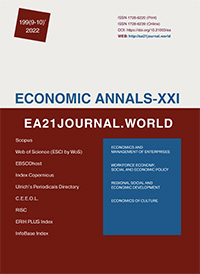Determining mitigation on landslide prone level in watershed area: analysis of study on Samin Hulu Karanganyar District of Indonesia and its economic consequences
Determining mitigation on landslide prone level in watershed area: analysis of study on Samin Hulu Karanganyar District of Indonesia and its economic consequences
Author(s): Priyono Priyono, Sigit Handoko, Rahayu Rahayu, Sicilia Sawitri, Fransiska Sinta Devi MurwaningtyasSubject(s): National Economy, Micro-Economics, Social development, Economic development
Published by: Institute of Society Transformation
Keywords: Landslides; Agricultural Economics; Types of Landslides; Production Rate; Watersheds; Samin Hulu Karanganyar District; Indonesia;
Summary/Abstract: Landslides in Indonesia have caused much damage and claimed lives inland, environment, people, and property. This study aims to identify and analyze the types of landslides, the factors causing landslides, and the impacts of landslide-prone impacts in determining food security and agricultural economics. The research method used was survey and laboratory analysis. The research was conducted in the Samin Hulu Tengah River Basin (Matesih and Karangpandan Districts) Karanganyar Regency, Central Java, Indonesia. The research data were obtained using field surveys and literature studies. The research data is in the form of thematic maps of the area, data on landslides in the watershed, soil samples analysis, and survey results. The results showed that the level of landslide-prone in Karangpandan District was higher than in Matesih District. The causes of landslides were triggered by higher rainfall, higher slopes, more dominant andesite rocks. In Karangpandan, there are five types of landslides, namely Landslides, Rocks, Subsidence, Landslides, and Soilcreep. Regarding the methods of land management and food security, the analysis of the findings showed that the cultivation pattern, increasing soil fertility, landslide and water resources management had the greatest relationship with agricultural economy. Farmers who used the methods regarding landslide and water resources management had more safe and healthy access to food due to increased land quality and productivity. Therefore, it can be said that in order to increase the yield of agricultural products, increase food security and invest in this field, more support services should be provided to farmers and necessary measures should be taken for more participation and cooperation of farmers in the field of sustainable land management.
Journal: Економічний часопис - ХХІ
- Issue Year: 199/2022
- Issue No: 9-10
- Page Range: 40-47
- Page Count: 8
- Language: English

